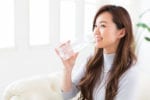The Rising Popularity of Hard Seltzers

Fad or Here to Stay? Tracing the Popularity of Hard Seltzers
There is no denying that hard seltzers are hugely popular with today’s spirit drinkers. Hard seltzers are a fresh alternative to beer and wine and are often termed an ideal summer drink.
Every trend has its own unique origins. That begs the question: where did the popularity of hard seltzers come from?
To answer that we need to do a deep dive into the history of seltzer drinks.
Seltzer water was invented in the 1700s. It was first conceived in 1740 by William Brownrigg, however he never published his theory. This left the door open for Joseph Priestly to be recognized as the father of carbonated water when he published his method of carbonating water in 1767. As you can imagine, the technology has evolved by leaps and bounds since then.
In 1781, Thomas Henry created the first carbonated water factory in Manchester England. On the other side the pond, in the United States of America in the 1760s, Native Americans believed natural sparkling springs in upstate New York had medicinal values.
Whether man-made or occurring naturally, carbonated water became a symbol of status in the United States. In fact, in the mid-20th century a sign of middle class was having a soda siphon in the home. Also known as a seltzer bottle, the soda siphon allowed people to carbonate flatwater in the home.
In the United States, carbonated water was most commonly referred to as “soda water” until World War II. It was called soda water because it contained sodium salts. Costing two cents, soda water was the cheapest drink you could get at a soda fountain and you could have flavored syrup added to your soda for an extra penny.
Hard seltzers, those containing alcohol, had their genesis in 1993 when Coors Brewing Company introduced Zima to the adult beverage marketplace. A clear, effervescent drink with a distinct citrus taste, Zima catapulted to popularity as a light, refreshing alternative to the hops laden flavor of traditional beers.
According to Brendan Koerner’s Slate.com article “The Long, Slow, Torturous Death of Zima”, the adult beverage hit its peak in 1994, selling an astounding 1.3 million barrels.
While Zima was very popular with female drinkers out of the starting gate, it struggled to overcome an image of being a “girly drink.” In 1995 Coors introduced Zima Gold -an amber beverage with a hint of bourbon flavor to try to attract male drinkers. The beverage had miserable sales and was discontinued within a year.
Even the popularity of the original Zima beverage was fleeting. By 1996 sales had dropped to just 403,000 barrels.
According to Koerner, after introducing citrus, tangerine, and pineapple citrus flavored Zima in the 2000s, in October 2008 Coors announced that it would no longer offer the beverage in the United States. However, according to the article “Zima Gets a New Look and a Second Chance” in the Japan Times, Zima is still available in Japan. In fact, ironically, it is males in their 20s that are the biggest drinkers of Zima in Japan, clearly different than how the drink was shunned by men in the U.S.
According to the Vine Pair article “10 Things You Should Know About Bon & Viv Spiked Seltzer”, hard seltzers were reintroduced to the alcoholic beverage market in 2013 with Bon &Viv Spiked Seltzer based on the popularity of vodka sodas. The new seltzer was the brainchild of entrepreneur Nick Shields, who sold his company to Anheuser-Bush in 2016.
While beer sales remained flat in 2018, hard seltzer sales jumped 169% to approximately $488 million on a 181% volume gain.
In the Market Watch article “Hard Seltzer Sales Chug Towards $1 Billion”, we discover that in 2019 sales of the adult beverage reached the $1 billion mark. In the article, the vice president of operations for Mendez Fuel, a convenience store chain, indicated that Millennials are the primary demographic buying hard seltzers.
Within the Market Watch article on hard seltzer popularity, according to Dave Burwick, president and CEO of Boston Beer Company which produces the Truly hard seltzer brand, the category is expected to double sales in 2020 and grow an additional 50% in 2021.
In 2019, the top selling hard seltzer brands were White Claw from Mark Anthony Brands, and Boston Beer Company’s Truly. According to Burwick, the hard seltzer boom is based on the beverages being perceived as more healthy than other alcoholic beverages. Burwick stated that consumers are flocking to the hard seltzer market because the beverages are relatively low in calories, sugar, and carbohydrates.
The sentiment is echoed in the Seven Fifty Daily article “What’s Fueling the Rapid Growth of Hard Seltzer?” which states that the rise in popularity of hard seltzers has been fueled by the recent trend for “more health-conscious drinking habits and a preference for low-alcohol beverages, particularly among millennials.” These carbonated water-based, ready-to-drink cocktails are made from malted barley or fermented sugar. Each hard seltzer drink is typically 100 calories or less, a far cry from heavy beers, wines, and mixed drinks that can range up to 400 calories per serving.
According to the Seven Fifty Daily article, additional appeals for hard seltzer drinkers is that their beverage of choice is low in alcohol content – typically 4.5%-6% alcohol by volume. It is also of note that consumers appreciate that the drink is gluten free.
As noted in the article, one attraction to hard seltzers in their present form is that they are a canned, rather than bottled, beverage. Author Kathleen Willcox makes the argument that there is convenience in having the drink in a shatterproof portable can.
Willcox goes on to explain that pricing is a feature where hard seltzers also excel. They are usually cheaper than craft beers, or midrange wine and spirits.
According to a December 2019 article in Forbes entitled “Is Hard Seltzer a Fad? New Data Suggests Otherwise”, a key indicator of the long-term potential for hard seltzer are repeat purchase rates. Over 30% of consumers who buy White Claw hard seltzer once, buy it again. Compare that to consumers who purchased a hard root beer; only one in ten purchased the beverage again.
According to IWSR, a data firm that provides insights into the alcoholic beverage market, the hard seltzer market is expected to triple to 281 million cases by 2023.
“Hard seltzers are far from a fad, they’re growing at a spectacular rate,” explains IWSR president Brandy Rand in the Forbes article. Hard seltzer products now control 2.5% of the entire U.S. alcohol market.
While White Claw and Truly control 85% of the hard seltzer market, according to the investment firm Guggenhem Partners, the market is quickly attracting small players looking to test the market. In the article “In Focus: Hard Seltzers” from The Drinks Business, we learn that brand leader White Claw’s gender split is 53% female and 47% male. This indicates a fairly even split of popularity among genders.
So what do all the figures and expert speculation mean?
Hard seltzers are incredibly popular with both men and women. And, passing time brings more and more entrants into the beverage category. Only time will tell if hard seltzers will continue to attract buyers, but at present the future looks bright.






